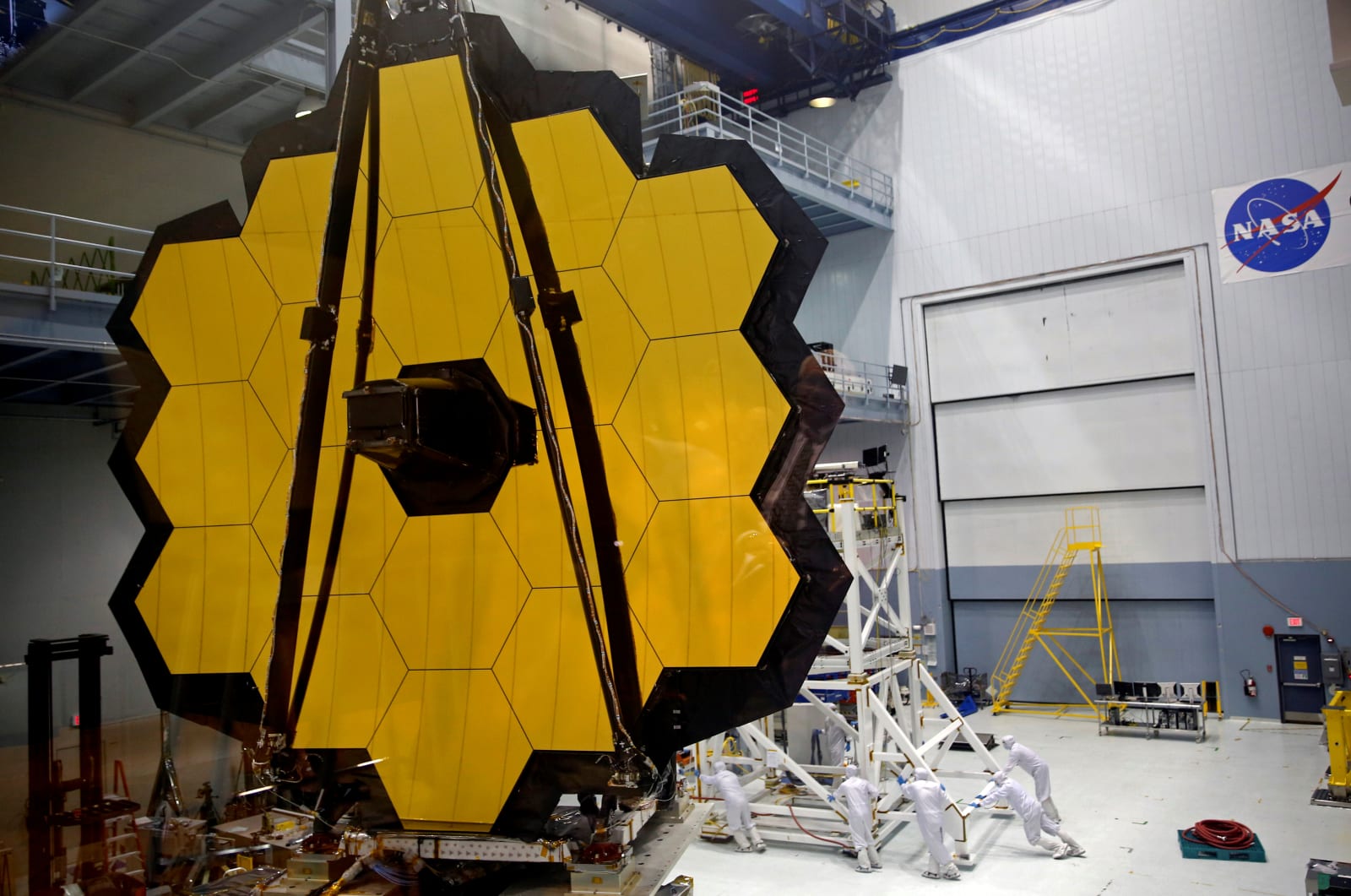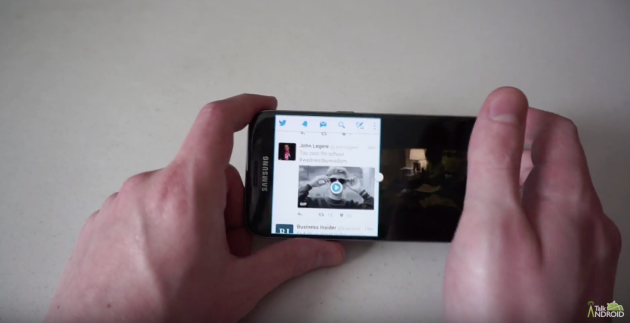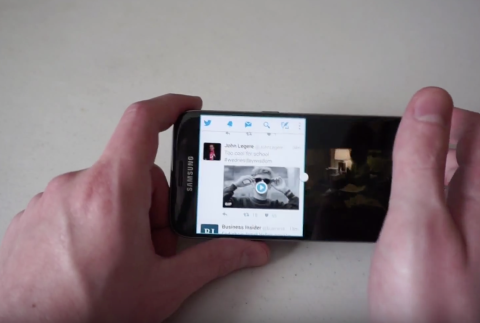Posts Tagged: window
This wireless 55-inch OLED TV sucks… onto any wall or window
One of the biggest reasons I don't have a wall mount for my TV is because I don't want to deal with the mess of installation. The dust, the drilling, the permanence — all of that gives me stress (I know, I know, I'm more sensitive than most people). So when I heard that the Displace wireless TV can be attached to any wall or surface without a mount, I was very excited. This is a 55-inch 4K OLED screen that uses active-loop vacuum technology to suction itself into place, and the company built handles into the frame to make it easier to hoist. The Displace also has four onboard batteries that eliminate the need for a power cord, and they're hot swappable so you don't have to wait for one to recharge before you can watch your TV again.
Because the prototypes we saw in Vegas were custom designed for CES, the company says details about battery size and charge time aren't available yet. But they did say that they expect users to get a month of runtime if they watch six hours of TV a day. Part of the reason the Displace can do without a power cord is because it doesn't do very heavy processing onboard. It's basically streaming media from a base station that comes with the device and performs the rendering.
My favorite thing about the Displace TV is the ease of setup. I wasn't allowed to try this out myself since the prototypes were fairly precious, so I could only watch as the company's CEO slid his hands into the two slots and lifted the screen. According to Displace, each unit weighs less than 20 pounds, which is impressively light.
The CEO took the TV over to a window, and when the vacuum loops on the back detected it was in contact with a surface, the mechanism whirred to life and began sucking itself onto the glass. After about 8 seconds, it was quiet, which indicated that it had affixed itself and was secure. I was then able to try jiggling the unit and see if I could pry it out of place. I didn't try very hard, since I was afraid of damaging the prototype, but I will say the screen seemed pretty securely attached. I'd say I used the equivalent force of opening a refrigerator door to try and get the suction to budge and it did not.
To dismount the TV, you'd have to press and hold a button on either side, and wait for the vacuum loops to slowly disengage. The company said this mechanism works with any flat surface — even if there is some slight texture like drywall. We tried to put the demo unit up on another wall, but couldn't find a spot wide enough to accommodate the 55-inch panel.
The Displace TV also has a pop-up 4K camera built into the top of the frame, and it doesn't just facilitate high-res video calls. The company's custom software powering the TV also allows for some gesture control, which is the only way to interact with the TV as there isn't a separate remote. For example, holding up your palm during playback will pause your show, while using two hands to mimic a stretching action can zoom in and out of items on the screen. If you have multiple Displace TVs, you can arrange four of them into a square and zoom into the feed from a specific quarter, for example.
There's also a very Minority Report-esque gesture that involves "grabbing" the content from one screen and "throwing" it at another one nearby. And if you point the thumbs up gesture at the camera, it activates a mode that has your content follow you as you walk around your house into different rooms. Since they're all streaming from the same base station, the multiple screens can pick up your content where you left it in a different room.
If you're feeling baller, you can put four Displace TVs together to create a 110-inch 8K TV. In that scenario, the relatively thin bezels here can help minimize disruption when four screens are playing as one. But Displace told Engadget it was also working on future models that could be bezel-less to eliminate the borders altogether. The company also has many plans, including exploring potential partnerships to build in some form of wireless charging, as well as releasing an API to allow third-party developers to create applications for the hardware.
For now, though, I'm already pretty impressed by the concept and want one. At $ 3,000, though, the Displace TV is fairly pricey. Only 100 units are available for pre-order at the moment, and the company said they'll start shipping in December. I'm anxious to get one to see how well the vacuum system holds up over time — the last thing I want is to wake up to the crash of a $ 3,000 TV breaking my furniture, hopes and dreams.
NASA’s Hubble successor may miss its launch window
 The James Webb Space Telescope, NASA's successor to Hubble, has undergone its share of delays. Now, things are getting even tighter. A report from the US Government Accountability Office finds that because of ongoing technical issues with the telesco…
The James Webb Space Telescope, NASA's successor to Hubble, has undergone its share of delays. Now, things are getting even tighter. A report from the US Government Accountability Office finds that because of ongoing technical issues with the telesco…
Engadget RSS Feed


[Video] Multi Window on the Samsung Galaxy S7
 Interested in seeing Samsung’s Multi Window functionality in action? We’ve got a full hands on video demonstrating the split-screen mode on the Galaxy s7, showing off how easy it is to watch videos while keeping up with social media or composing a text message.
Interested in seeing Samsung’s Multi Window functionality in action? We’ve got a full hands on video demonstrating the split-screen mode on the Galaxy s7, showing off how easy it is to watch videos while keeping up with social media or composing a text message.
The Multi Window works pretty similarly to how it did on the older Galaxy Note 5 and Galaxy S6, so if you’ve used a Samsung phone from 2015 you’ll be very familiar with this.
Check out the video below to see it for yourself.
Come comment on this article: [Video] Multi Window on the Samsung Galaxy S7
Eyewitness video on YouTube: your window to the world
In the last ten years, we’ve witnessed many of the biggest and most important news stories unfold on YouTube. From the Green Revolution, Arab Spring and protests in Ferguson, to the Charlie Hebdo attacks and earthquake in Nepal, user-generated video has provided a unique and visceral perspective on what’s happening in the world around us. It’s almost impossible to turn on the news during a breaking event without seeing raw video uploaded by a YouTube user somewhere across the globe.
Today, more than 5 million hours of news video is watched on YouTube every day, and the role of the eyewitness has never had a more vital place in the newsgathering process. We live in a world where anyone can bear witness to what is happening around them and share it with a global audience, and YouTube has become a primary home for this powerful, first-person documentary footage.
That is why we’re excited to announce three new initiatives to support the discovery and verification of eyewitness news video on YouTube:
- The YouTube Newswire: In partnership with Storyful, a social news agency we’ve worked with since protests broke out in Tahrir Square in 2011, we’re rolling out the YouTube Newswire, a curated feed of the most newsworthy eyewitness videos of the day, which have been verified by Storyful’s team of editors and are embeddable from the original sources. With the Newswire, we hope to provide journalists with an invaluable resource to discover news video around major events, and to highlight eyewitness video that offers new perspectives on important news stories. The Newswire will feature global and regional feeds that surface the most relevant videos in different parts of the world. Follow us on Twitter or subscribe to the daily newsletter to get the latest videos delivered directly to your inbox.
- The First Draft Coalition: You could say that user-generated news video is today’s “first draft” of capturing an event that took place. But when it comes to incorporating this content into the reporting of a news event, verification is a critical step for any newsroom — and not every journalist knows where to start. So we’re bringing together a group of thought leaders and pioneers in social media journalism to create educational resources on how to verify eyewitness media, and how to consider the ethics of using it in news reporting. This new group, called The First Draft Coalition, will consist of experts from Eyewitness Media Hub, Storyful, Bellingcat, First Look Media’s Reported.ly, Meedan, Emergent, SAM Desk, and Verification Junkie. The Coalition will develop and program a new site for verification and ethics training, tools, research, and, most importantly, case studies around the biggest news stories of the moment. The site will launch this fall, but in the meantime, check out the Coalition’s Medium collection, chock full of how-to posts and examples of UGC verification, which we’ll update every week. You can also follow First Draft on Twitter.
- The WITNESS Media Lab: Over the past decade, YouTube has provided a platform for people to share eyewitness video of human rights atrocities around the world. In partnership with WITNESS, we are supporting the WITNESS Media Lab, a new approach to tackling pressing human rights issues through the analysis of citizen video. The WITNESS Media Lab – in collaboration with innovators in the technology, advocacy and journalism fields – will produce a series of in-depth projects that focus on human rights struggles as seen from the perspective of those who live, witness, and experience them. The first project from the WITNESS Media Lab will explore the impact of bystander video in bringing about justice in police brutality cases in the United States. Check out the new site and follow the WITNESS Media Lab on Twitter for more updates.
We’re proud of the role that YouTube and its creators have and continue to play in the ever-changing, ever-expanding news and information ecosystem, and we hope that these new projects will empower more journalists to use powerful eyewitness video easily and responsibly.
Posted by Olivia Ma, Head of Strategy and Operations, News Lab at Google
